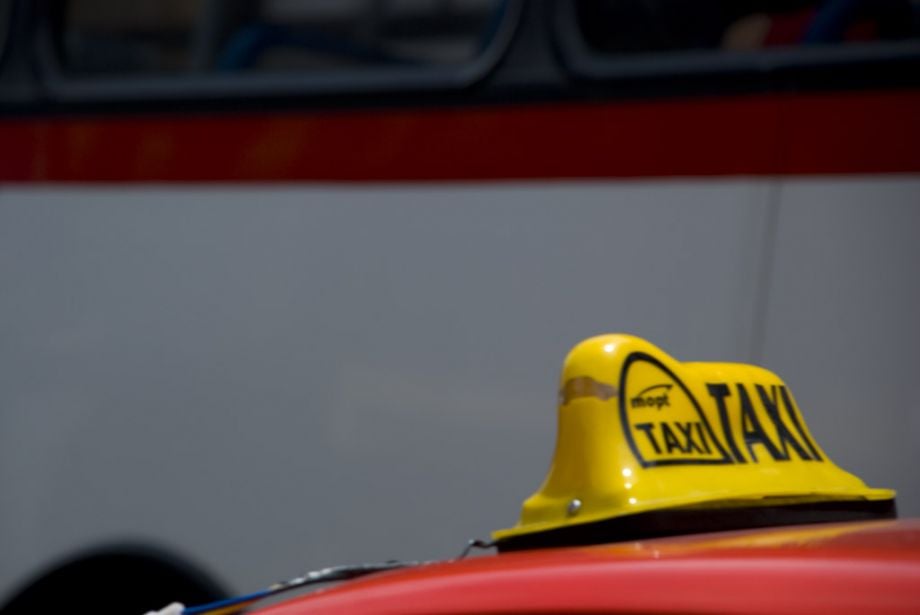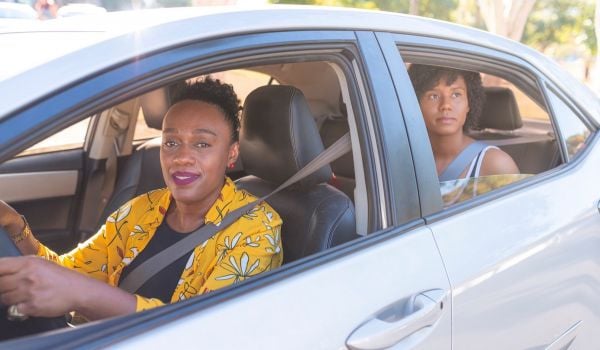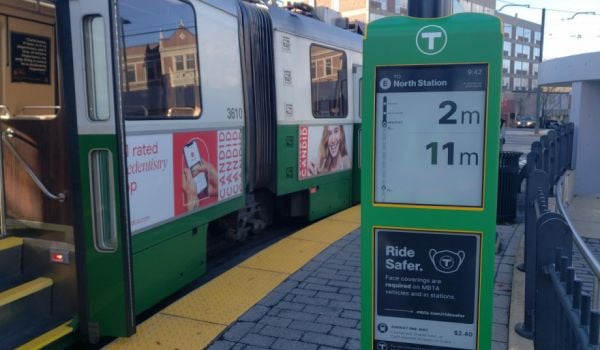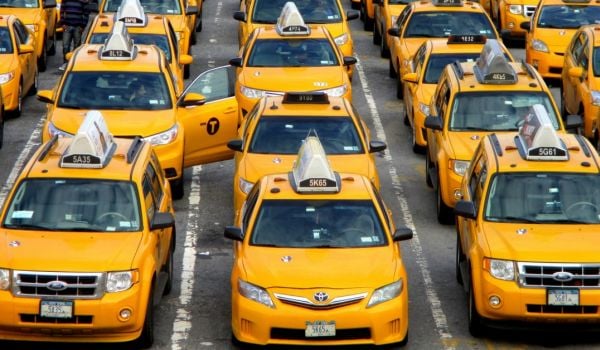Once upon a time, vehicles painted yellow drove around en masse in cities across the nation, ready to get people where they wanted to go. To get on one, people simply raised their hand out as they saw one, or they called a company they wanted to ride with.
Once the ride is over, you could only pay for a taxi with cash. That is, if you could get into one. Some drivers would refuse fares, especially to far-flung places, because the amount it would cost in gas, maintenance, and time, for example, would be far too much compared to what they could earn, tip notwithstanding.
Then the smartphone was invented, and Uber entered the fray. The rides, heavily subsidized by venture capital, were cheap, and you could pay with a credit card. It wasn’t hard to find a driver; Uber and Lyft heavily recruited them, hawking about how much they could make. Their background checks were much easier than what taxi drivers went through. Lyft and Uber did not have a limit on how many drivers they could recruit compared to taxi companies, and they also pay lower fees compared to them.
But recently, taxi ridership has been slowly making a comeback in cities like San Francisco, New York, Chicago, and Minneapolis. Why? Many Uber and Lyft drivers exited the business during the pandemic, leading to longer wait times and surge pricing. Some drivers and app-makers think this is the moment for cab drivers to seize.
In 2017, Curb Mobility launched an app that works a lot like Uber or Lyft, but summons a licensed cab instead.
Curb was founded by merging companies that provided fare calculating and payment solutions for taxis. Its pivot to creating an app for taxi companies was to help them compete with rideshare. “With the advent of the ride sharing companies, the taxis actually needed someone to help provide them with a competitive app-based platform,” says Jason Gross, Curb’s vice president. “Demand is no longer the exclusive province of taxis to take people from point A to point B in a city, and they need to become more technologically advanced.”
And people are responding. Curb, which is headquartered in New York, experienced a 300% increase in people using its app to hail taxis between 2018 and 2021 in New York alone, although the company wouldn’t provide hard numbers.
Barry Taranto has been driving a taxi in San Francisco for 21 years. The taxi company he drives for, National, partners with Flywheel, another taxi hailing app that got its start handling mobile fare payments for taxi rides. “We have seen a tremendous increase in the use of the Flywheel app from those who refuse to pay the exorbitant surge pricing [of Uber or Lyft],” says Taranto, who adds one gripe he has is the amount of money Flywheel takes from drivers. Flywheel, which couldn’t be reached for comment, also partnered with the city’s oldest taxicab company, Desoto Cab, in a co-branding arrangement, where it was renamed Flywheel Taxi, to increase its users. Flywheel may also be helping centralize how taxis are dispatched in San Francisco, meaning people who use the app are more likely to be connected to rides.
Taxi ridership in San Francisco was also decimated by rideshare, although according to data obtained from the San Francisco Municipal Transportation Agency, 2021 taxi ridership numbers are higher, at 1,828,370 rides, compared to 1,678,567 in 2020. Still, it’s miniscule compared to the 41 million rides both Uber and Lyft delivered in San Francisco in 2020, according to data obtained from the California Public Utilities Commission.
What may also be helping the city’s taxi industry survive may be affording those with limited mobility discounted rides. At the onset of the pandemic, San Francisco Muni obliterated much of its transit system, leaving 17 routes running. To ensure those who could not walk to their nearest transit route can continue to get around, the agency developed the so-called “Essential Trip Card,” which affords them discounted rides on taxis. Since the program began in April 2020, 4,872 users have been enrolled as of December 2021.
Blue and White taxi, which serves the seven-county Twin Cities metro area and headquartered in the Minneapolis suburb of St. Louis Park has also been affected with the rise of Uber and Lyft. But working with accounts, such as partnering with schools and the Minnesota Department of Human Services to transport people to their medical appointments, has kept them afloat.
“So … ridership hasn’t fallen off, it’s shifted where we took on a lot more account business and we left the cash business [call-ahead or walk-up rides] to be whatever it is,” said Waleed Sonbol, who is one of the owners of Blue and White taxi, adding that call-ahead and walk-up rides account for no more than 15% of their daily rides. “So we do roughly maybe a million rides a year. But like I said, our business has vastly shifted in how we do work.” Although Blue and White uses an app called Riide to allow riders to summon a cab, it’s hard for Sonbol to determine how many people are using it, because more than 9 in 10 riders who do use the app to hail cabs don’t use it to pay. Neither the city of Minneapolis nor the state of Minnesota collect ridership data from either taxi or rideshare companies.
Even where app-based hailing of cabs is on the rise, it might not be enough to save the taxi industry. In New York, where Curb usage has skyrocketed during the pandemic, taxi ridership overall plummeted during the same period. While more than 121 million rides were taken in 2018, cabs only delivered 26 million rides in 2020. And while the city of New York hasn’t released taxi ridership data for all of 2021, with 2.8 million rides as of the end of July, it suggests a downward trend. And although rideshare ridership in New York appears to be decreasing, from 234.6 million rides for the last 11 months of 2019 to 143.2 million for 2020, ridership for the first eight months of 2021 is at 96.6 million, which may suggest a slight uptick.
App-based hailing may be helping in other cities. Taxi ridership in Chicago had been in freefall before the pandemic, declining from 31 million rides in 2016 to 16.5 million in 2019. And while the pandemic devastated taxi — and rideshare ridership — taxi ridership grew slightly, from 3.89 million in 2020 to 3.95 million in 2021, while rideshare ridership continues to drop from 161.9 million rides in 2019 to 46.1 million in 2021. Curb does operate in Chicago, but was unable to provide numbers by press time.
But even as ridership beckons, taxi companies across the nation might not have enough people to drive them around. A number of drivers left when Uber and Lyft reached its pinnacle. “[We] lost all our rides at nighttime, like, we became where New Year’s Eve [we had] hardly anything, before we would bring in temporary staff [to] help take calls on New Years Eve,” said Sonbol. “I think the pinnacle was probably in 2016, maybe 2017, where it just became our drivers didn’t even want to go out, it wasn’t worth their time.” Minneapolis today has 48 licensed drivers in the entire city, compared to 1,359 ten years ago.
The pandemic did more damage. Like their rideshare counterparts, a majority of taxi drivers in San Francisco, Minneapolis, Chicago, and New York are immigrants and live in multigenerational households. Drivers who are infected with Covid-19 could devastate these households. “So a lot of them left right when [the pandemic] happened, because they really don’t want to get their mom or dad, [or] children … sick,” said Sonbol, himself a descendant of Egyptian immigrants.
Kelly Dessiant, a writer based in San Francisco who drove taxis and wrote about it in a series of columns for the San Francisco Examiner, hasn’t driven a cab since the pandemic began, not only for health reasons, but because the costs of driving a cab outweigh how much he could earn. “My partner works from home and we have a five year old daughter. I just don’t think I can make enough money driving a taxi right now to justify the expense of putting her into a preschool full time,” he tells Next City.
Many of those who continue to drive in San Francisco, Chicago, and New York are working to pay off their medallions, essentially permits needed to drive a taxi. What used to be distributed on a waiting list is now financed by drivers through thousands of dollars in loans.
And even with drivers available, taxi companies don’t have enough vehicles to go around. Minneapolis only has 43 licensed taxicabs, compared to 831 a decade ago. Cab drivers, who own their own vehicles, are buying older models and do not want to paint them. Sonbol is hoping to lobby the cities of Minneapolis and St. Paul to loosen the paint scheme requirement for the cabs. “If you don’t even need [a paint scheme] for [transportation network companies], why do you need it for a cab? You know, lettering and a number is more than enough,” said Sonbol.

H. Jiahong Pan 潘嘉宏 (pronouns: they/them/佢/他) is a Minneapolis-based introverted freelance journalist who reports primarily on their lifelong passion: transportation issues. Find them on a bus of all types, the sidewalk, bike lane, hiking trail or perhaps the occasional carshare vehicle, camera and perhaps watercolor set or mushroom brush in tow, in your community or state or regional park regardless of season. If you can’t find them, they’re probably cooking, writing, curating an archive of wall art or brochures, playing board games, sewing or cuddling with their cat.
















